|
|
|
|
| Missing In Action (MIA) | Prisoners Of War (POW) | Unexploded Ordnance (UXO) |
| Chronology | Locations | Aircraft | Ships | Submit Info | How You Can Help | Donate |
|
| USN Gato-class submarine 1,526 Tons (surfaced) 2,424 Tons (submerged) 307' x 27.3' x 19.3' 10 × 21" torpedo tubes (6 fwd, 4 aft) with 24 torpedoes 1 x 3" 50 cal deck gun 2 × .50cal MG 2 × 30cal MG 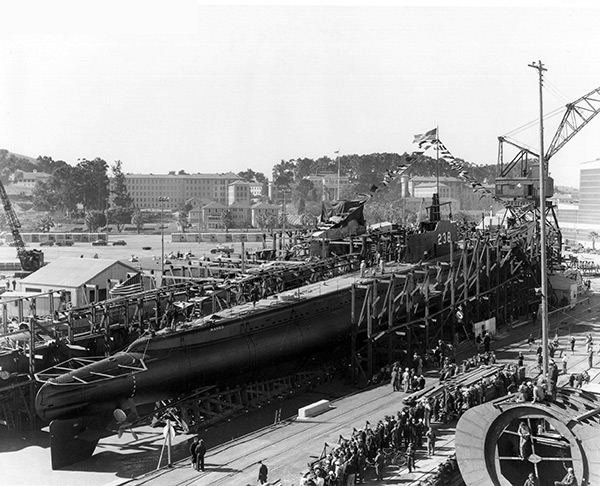 USN February 14, 1942 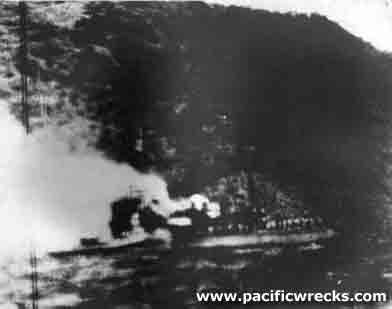 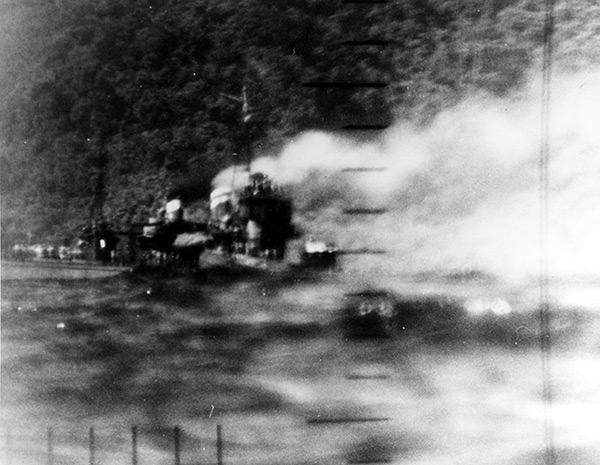 USN January 24, 1943 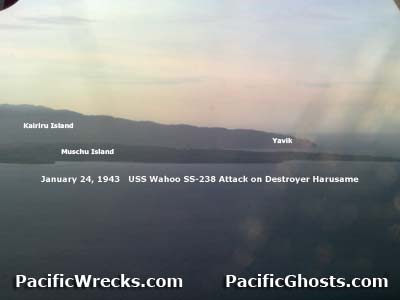 USN Justin Taylan 2006 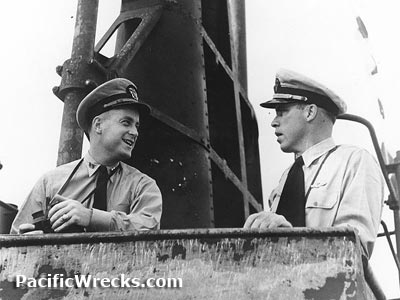 USN February 1943 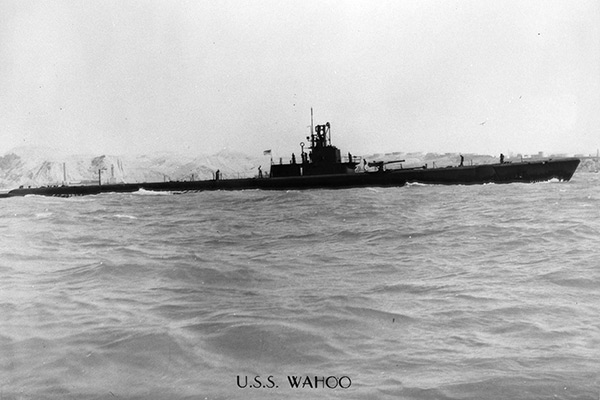 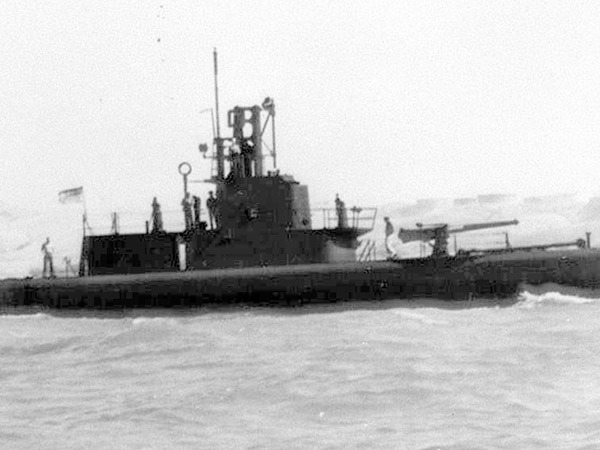 USN July 1943 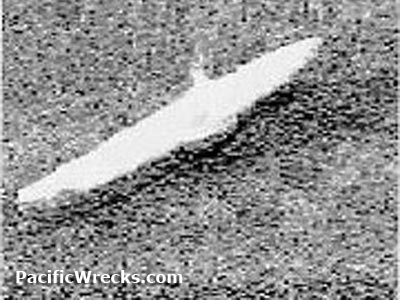 Sonar Image July 2006 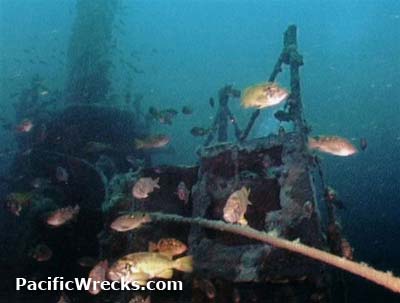 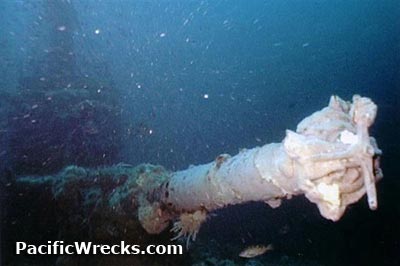 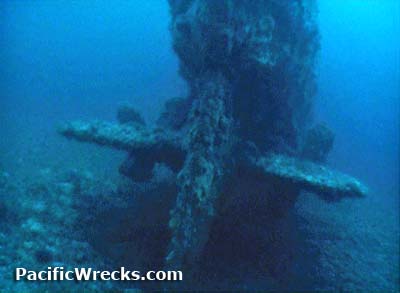 Vladimir Kartashev 2006 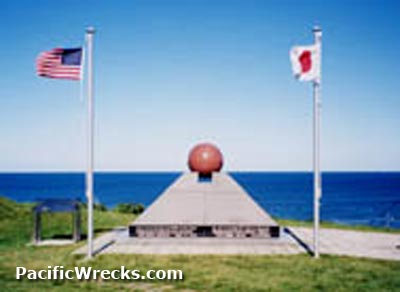 Point Heiwanohi |
Sub History Built at Mare Naval Yard on Mare Island. Laid down June 28, 1941 as Gato-class submarine. Launched February 14, 1942 as USS Wahoo (SS-238) the first ship named after the dark blue fish sponsored by Mrs. William C. Barker, Jr. Commissioned May 15, 1942 in the U.S. Navy (USN) with Lieutenant Commander Marvin G. "Pinky" Kennedy in command with Richard H. O’Kane joining the commissioning crew. Wahoo underwent fit out and a shake down cruise off the coast of California as far south as San Diego. On August 12, 1942 departs for Pearl Harbor arriving six days then continues training exercises until August 21, 1942. First War Patrol (August - October 1942) During August 1942 departs on her first war patrol under the command of Richard H. O’Kane to patrol off Truk between the Hall Islands and the Namonuito Atoll. On September 6, 1942 spotted a lone freighter, fired three torpedoes and all missed. She continued to patrol the area until September 20 and proceeded to the southwest part of the patrol area and operated south of Namonuito Atoll. Under a bright moon and clear sky, the submarine sighted a freighter and her escort. Wahoo fired three torpedoes; all missed. A fourth hit the target, which took a port list and settled bodily and by the stern. Four minutes later, a series of three underwater explosions were heard. Wahoo was chased by the escort but escaped by changing course in a rain squall. Though credited at the time with a freighter of 6400 tons, postwar analysis of Japanese shipping records showed no sinking. Wahoo continued her patrol and sighted several airplanes, a patrol boat, and a tender but was unable to close. On October 1, 1942, patrols to Ulul Island where she sighted fishing boats. Next she sited Chiyoda sailing without escort, but was unable to reach a firing position. On October 5, 1942 spots an aircraft carrier escorted by two destroyers, but was not able to reach it. Two days later, Wahoo departed the patrol area. On October 16, 1942 rendezvous with her escort and proceeds to Pearl Harbor, arriving on October 17, 1942. At refit and overhaul including the addition of a a 4" gun and two 20mm guns completed by November 2, 1942 then undergoes three days of training. Second War Patrol (December 1942) On November 8, 1942 under the command of Richard H. O’Kane departs on her second war patrol bound for Bougainville and Buka. On November 30, 1942, Wahoo spotted smoke at a distance and locate a lightly loaded freighter or transport with a destroyer escort, but failed to intercept. Next, patrols the Buka-Kilinailau Channel for seventeen days. On December 7, 1942 departs to patrol the direct route between Truk and Shortlands, but finds nothing. On December 10, 1942 while returning to Buka-Kilinailau Channel, Wahoo discovered a convoy of three cargo ships escorted by a destroyer. She chose the largest tanker as the first target and fired a spread of four torpedoes at a range of 700 yards (640 m). Although three hit, it took two hours for Kamoi Maru (5300 tons) to sink. The destroyer got too close and Wahoo started down before another attack could be launched. The destroyer dropped approximately 40 depth charges. Rather than use the new SJ radar to mount a second attack, Wahoo let them go on a northeasterly course. Four days later, a hospital ship was sighted, but not attacked. On December 15, 1942 Wahoo left the area and for Kieta Harbor, then completed the patrol on 26 December arriving at Brisbane, for refit. On December 31, 1942 Lt. Comdr. Kennedy was relieved as commanding officer for being unproductive. Dudley W. "Mush" Morton, who served as a prospective Commanding Officer during Wahoo's second patrol replaced him as captain. Afterwards, undergoes sonar tests in Moreton Bay. Third War Patrol (January - February 1943) On January 16, 1943 began her third war patrol under the command of Richard H. O’Kane to reconnoiter Wewak, but had no charts of the harbor. One of the motor machinists had bought a cheap school atlas while in Australia. It had a map of New Guinea with a small indentation labeled "Wewak". With that as a reference, a blowup was made. On January 24, 1943 west of Kairiru Island Wahoo spots destroyer Harusame and fired three torpedoes that missed. Another was fired which the destroyer avoided by turning away, then circled and headed towards the submarine. Waiting until the destroyer had closed to 800 yards before firing her fifth and last torpedo in the forward tubes. It struck amidships, damaging the destroyer. Afterwards, Wahoo escapes hearing shelling and a couple aerial bombs exploding, as the Japanese searched for the submarine. At 7:30pm surfaced clear of the area and observed a high fire in Wewak Harbor and departed the area to the northwest following a known convoy route towards Palau. On January 25, 1943 at 5:30am passed between Aua Island and Wuvulu Island and searched for enemy shipping. At 8:30 spotted a small fishing boat and fired a Tommy gun across the bow then took the vessel alongside. Aboard were six Malayans with three very sick who were without food or water. Using hand signals, the crew learned three had already died and in an act of mercy gave them food and water then departed. At 4:45 performed a dive for a half hour and while submerged crossed the equator. On January 26, 1943, at 7:57am spotted smoke on the horizon from two freighters, and fired two torpedoes at the leading ship and two at the second. The first two torpedoes hit. The third passed ahead of the second freighter, the fourth hit. Upon observing the damage, Wahoo discovered there were two freighters, a huge transport, and a tanker. The leading freighter was listing badly to starboard and sinking by the stern; the second ship was headed directly for Wahoo, at a slow speed. Wahoo fired a three-torpedo spread at the transport; the second and third hit and stopped her. The second target headed for her was Fukuei Maru #2. Wahoo fired two bow tubes "down the throat". The second torpedo hit, but Fukuei Maru #2 kept coming and forced the submarine forcing it a hard left turn full speed to avoid being rammed. Returning to periscope depth, Wahoo observed the first target had sunk, the second target was still moving, evidently with steering trouble; and the transport, Buyo Maru, was stopped but still afloat. Wahoo headed for the transport and fired a bow tube; the torpedo passed directly under the middle of the ship but failed to explode. She then fired another torpedo which headed right for the stack and blew her apart her midships. The submarine then headed for the crippled second target which had joined with a tanker. Wahoo let these two ships escape, while she surfaced to charge her batteries and destroy the estimated twenty lifeboats now in the water. Wahoo changed course to attack the two fleeing ships, attacking the tanker first. With only four torpedoes left, the submarine fired two at the tanker, the second hitting her just abaft of his midships, breaking her back and causing it to sink almost instantly. Wahoo then fired her last two torpedoes without a spread. They both hit. Fifteen minutes later, the freighter sank. Postwar records revealed only three ships were three sunk: Buyo Maru (5,300 Tons), Fukuei Maru (2,000 Tons), and an unknown transport (4,000 Tons). Afterwards, Wahoo set a course for Fais Island. On January 27, 1943 Wahoo made contact with a convoy of eight ships, including two freighters and a tanker. However, efforts to gain a position were foiled by a persistent destroyer escort who dropped six depth charges. Wahoo retreated as she had no torpedoes left. On January 8, 1943 Wahoo sights Fais Island and approaches the southern side and approaches within 1.5 miles of the beach, spotting the phosphate works and planned to shell the facilities in the evening to expend their remaining 4" shells. At 2:00pm, an armed inter-island steamer arrived and began loading phosphate. At 4:00pm took photographs and aborted the attack and departs bound for Pearl Harbor. On February 7, 1943 at 8:30am enters Pearl Harbor ending the patrol with a straw broom lashed to her periscope by the crew to indicate a clean sweep. For the next eight days undergoes refit, dry dock and crew training. Fourth War Patrol (February 1943–April 1943) On February 23, 1943 departs on her fourth war patrol under the command of Richard H. O’Kane for Midway arriving four days later and topped off with fuel and supplies then proceeds to her patrol area off China without spotting a single aircraft or ship and makes most of the voyage surfaced and enters the Yellow Sea to a shallow water area averaging only 120' deep near the mouth of the Yalu River and Dairen. On March 11, 1943, Wahoo commenced a submerged patrol in her assigned area and along the shipping routes from Nagasaki-Formosa and Shimonoseki-Formosa. On March 19 1943 spotted Zogen Maru and fired a single torpedo that hit the after part of the ship, causing it to disintegrate upon impact. The forward part of the freighter sank two minutes later. There were no survivors. Four hours later, Wahoo sighted freighter Kowa Maru and fired two torpedoes. The first hit under the target's foremast with a terrific blast, leaving a tremendous hole up her side, but her bow remained intact. The second hit amidships; it was a dud. Two more torpedoes were fired, but the freighter maneuvered to avoid. Wahoo patrolled off Korea, just south of Chinnampo. On March 21, sighted a large freighter identified as Hozen Maru and fired three torpedoes and the third hit amidships and went down by the bow, sinking in only four minutes. Four hours later, Wahoo sighted the freighter Nittsu Maru. The submarine fired a spread of three torpedoes; two hit, one under her bridge and the other under her mainmast. The ship went down in three minutes. Four survivors ignored all efforts to rescue them. After collecting a few souvenirs from the scattered wreckage, Wahoo commenced a surfaced patrol, heading for Shantung. On 22 March, the submarine headed for Laotiehshan near Port Arthur. The following day, as Wahoo patrolled Laotiehshan Channel, also known as "Sampan Alley", she found herself surrounded by targets. Wahoo sighted a medium-size ship, apparently a freighter, and fired one torpedo. This hit Katyosan Maru just under the bridge, immediately enveloping her in a screen of coal dust. She settled fast and slowed down, vanishing in 13 minutes. Wahoo set a course for a point northeast of Round Island off Dairen. On 24 March, at 12:47, Wahoo sighted smoke and began to make her approach. At 19:49, she fired a spread of three torpedoes at a large tanker which was fully loaded with fuel oil. The first two exploded prematurely, the third missed. Wahoo fired a fourth shot; it also missed. The target commenced firing deck guns at Wahoo. The submarine surfaced after 14 minutes of ducking shots, gained position ahead, and dove. She fired another three torpedo spread. One hit the engine room and sank the ship in four minutes. The tanker was identified as Takaosan Maru. The next day, Wahoo sighted freighter Satsuki Wahoo Maru. She fired two torpedoes; when both exploded prematurely, so Wahoo battle surfaced to use her guns. She closed the target, raked her with 20-millimeter shells and holed her with almost 90 rounds of four-inch. The target caught fire in several places and sank in about one hour. Wahoo left on the following morning to investigate a ship on the horizon, which proved to be a small diesel-driven freighter. The submarine commenced firing with her 20mm and 4" guns. The freighter tried to ram, but Wahoo had no trouble in keeping clear. She continued her gunfire, setting the freighter ablaze from stem to stern and leaving her dead in the water. The crew alternated looks through the periscope as the freighter sank. Later that day, Wahoo sighted a 100-ton trawler and opened up with her four-inch and 20mm guns. When all three 20mm guns jammed, Wahoo went alongside the riddled trawler and the Wahoo men hurled on board some homemade Molotov cocktails. Wahoo departed, leaving the ship wrecked, spouting flame and smoke. On March 28, 1943 conducts a surfaced patrol on the Shimonoseki-Formosa shipping route, Wahoo opened fire on two motor sampans with two 20mm guns. They did not sink but were also left wrecked. On March 29, 1943 spots Japanese auxiliary cable ship Yamabato Maru and fired two stern tubes. The first torpedo hit at the point of aim under the mainmast and completely disintegrated everything abaft of the stack. The forward section sank in two minutes south of Kyushu. The second torpedo aimed at the foremast missed because the first torpedo stopped and sank the target. Wahoo surfaced, transited Collnett Strait then headed home, concluding a war patrol which topped the record to date for the number of ships sunk. Pearl Harbor reported, "Japanese think a submarine wolf pack operating in Yellow Sea. All shipping tied up." On April 6, 1943 arrives Midway for refit and training for the next nineteen days. Fifth War Patrol (April 1943–May 1943) On April 25, 1943 departs Midway on her fifth war patrol under the command of Richard H. O’Kane with air cover then proceeds northward to patrol off the Kurile Islands. The following day, she commenced surfaced patrol and reconnoitered of Matsuwa (Matua) photographing enemy installations then explores to the southwest and does not spot any enemy activity. On May 4, 1943 Wahoo reconnoiter the northeast tip of Etorofu Island; she found nothing and changed course to the southeast. After spotting Kimikawa Maru fired a divergent spread of three torpedoes from 1,350 yards. The first hit between the stack and bridge; the other two missed. Damaged, this ship turns away and was making 11 knots with a slight list. Wahoo continued on an easterly course, surfaced and continued to patrol the Kurile Islands southward. Three days later, Wahoo sighted two ships hugging the shoreline on a northerly course, 12 miles off the Benten Saki coast, and dived. She fired two torpedoes at the leading ship, followed immediately by a spread of four at the escort. The first torpedo hit the leading ship, Tamon Maru No. 5, under the stack and broke her back; the second missed ahead. The escort successfully avoided all four torpedoes fired at her and escaped. Tamon Maru (5260 tons) sank, and Wahoo proceeded down the coast. The submarine submerged one mile off Kobe Zaki and sighted a three-ship convoy consisting of two escort vessels and a large naval auxiliary. Wahoo fired a spread of three torpedoes; two exploded prematurely, the third failed to explode and the ship ship got away. On 9 May 1943 Wahoo proceeded up the coast with the intention of closing to Kone Saki. Radar picked up two targets, soon identified as a large tanker and a freighter in column. They were evidently making the night run between ports without an escort. The submarine fired a spread of three torpedoes at the tanker and immediately thereafter a three torpedo spread at the freighter. Wahoo had two successful hits, and both ships went down, Takao Maru, 3,200 tons and Jinmu Maru, 1,200 tons. Wahoo cleared the area to the northeast to patrol the Tokyo to Paramushiro route. On 12 May, sighted two freighters. She fired four torpedoes from 1200 yards, only one hit. Then Wahoo fired her last two torpedoes. Nothing was seen of the first. The second hit under the bridge with a dull thud, much louder than the duds heard only on sonar but lacking the "whacking" noise which accompanies an explosion. The other freighter opened fire with deck guns and charged Wahoo that departs for home. On May 21, 1943 arrives Pearl Harbor ending her fifth war patrol. On May 22, 1943 embarked Admiral Chester W. Nimitz, Commander in Chief, U.S. Pacific Fleet for award presentations to the crew. On May 23, 1943 departs for Mare Naval Ship Yard at Mare Island arriving six days later for an overhaul. On July 11, 1943 the overhaul was complete and began post-repair trials and training for nine days. On July 20, 1943 squadron commander Captain John B. Griggs, Jr., came aboard and made presentations of awards to the crew. On July 21, 1943 departs for Pearl Harbor arriving six days later. On July 29, 1943 Commander Dudley W. Morton was hospitalized for appendicitis and Lt. Commander Verne L. Sjkonsby temporarily assumes command. On July 30, 1943 departs for two days of training and fires three training torpedoes then. Sixth War Patrol (August 1943) On August 2, 1943 departs Pearl Harbor on her sixth war patrol under the command of Commander Dudley W. Morton and four days later arrives at Midway to top off fuel and supplies and leaves the same day. While crossing the Pacific, the crew continues daily drills and crosses the international date line on August 7, 1943. On August 13, 1943 during the night crosses the Etorofu Strait enters the Sea of Okhotsk then the Sea of Japan. Spots three medium freighters headed south. The submarine fired one torpedo but it missed. On August 15, spots a large freighter on a northerly course and broke off the chase on the three freighters. She commenced surfaced tracking of the new target and dove for a submerged approach. Wahoo fired one torpedo; it hit at the point of aim but was a dud. She fired two more torpedoes. Both missed. Wahoo then swung and headed directly for the target, which presented for a up-the-stern shot. The submarine fired another torpedo which missed and must have broached and exploded before the end of the run. Wahoo soon sighted an Otori-class torpedo boat and commenced evading. Next, Wahoo moved to the Hokkaido-Korea shipping route and spend the night and the following day. On August 16, Wahoo spots a freighter headed south and fires a torpedo at a medium-sized freighter that missed. The next day, the scene was repeated with the same results. Wahoo sighted freighter heading north in ballast and commenced a submerged approach. Wahoo fired one torpedo which missed. Just as she fired, a southbound freighter and this target passed each other close aboard; still no hit. She then surfaced and chased the southbound freighter. While pursuing this ship, the submarine sighted another target well ahead and away from the coast, so she shifted targets. While tracking this new target, she passed two small northbound ships: one looked like a tug and the other resembled a tanker. Wahoo made a submerged approach and fired a torpedo at the medium sized freighter. It was a miss. She fired again; still a miss, but this torpedo, probably broaching, exploded. The submarine surfaced and headed further away from the coast. Within four days, twelve Japanese vessels were sighted; nine were hunted down and attacked to no avail. Ten torpedoes broached, made erratic runs, or were duds. In light of the poor torpedo performance, ComSubPac ordered Wahoo to return to base. On August 19, the submarine sighted a ship and commenced tracking. However, she withheld fire when she recognized the flag as Soviet. Wahoo then heads for La Perouse Strait. The next day, she sighted a sampan and fired warning shots across the bow. When the sampan failed to stop, the submarine opened fire with her 20mm and 4" guns and was left a wreck. Afterwards, six Japanese fishermen surrendered and were taken aboard as prisoners. Eight hours later, Wahoo opened fire on two other sampans setting them both on fire. Some of the crews jumped overboard and showed no desire to be rescued. Wahoo past the Etorofu Strait then returned home. On August 25, 1943 arrives Midway and departs the same day. On August 29, 1943 arrives Pearl Harbor ending her patrol. Seventh War Patrol (October 1943) On September 13, 1943 departs Pearl Harbor on her seventh war patrol under the command of Commander Dudley W. Morton to patrol the Sea of Japan armed with new Mark XVIII electric torpedo rather than older Mark XIV steam torpedoes. On September 13, 1943 topped off fuel and supplies at Midway then proceed to the Sea of Japan. On September 20, 1943 Wahoo planned a rendezvous with USS Sawfish (SS-276) then cross La Perouse Strait to patrol the Sea of Japan. On September 21, 1943 sunk the Hokusei Maru (1,394 tons). On September 25, 1943 fired a torpedo that sank Taiko Maru (2,958 tons), although officially credited to USS Pompano (SS-181) the ship was sunk by Wahoo. On October 1, 1943 sunk Masaki Maru No, 2 (1,229 tons). On October 5, 1943 sunk Konron Maru (7,903 tons). On October 6, 1943 sunk Kanko Maru (1,288 tons). On October 9, 1943 sunk Kanko Maru (2,995 tons). Sinking History On October 11, 1943 at 8:30am began crossing the La Perouse Strait when spotted by a coastal gun battery on Soya Misaki that opened fire and called for air support. Wahoo submerged and continued on course. At 9:20am Type 0 Reconnaissance Seaplane / E13A1 Jake No. 19 from Wakkanai arrived overhead and spots an oil slick then the conning tower and drops two bombs. Likely, one of these bombs hit the submarine at periscope depth and cause it to sink. Next, two more Jakes arrive and drop six depth charges. At 11:45am the first Jake guides subchaser CH-15 to the submerged submarine and drops nine depth charges followed by seven depth charges causing a metal object that resembles a propeller blade to be thrown up to the surface. At 12:18pm subchaser CH-15 releases a single depth charge then is relieved by subchaser CH-43. At 12:21 subchaser CH-43 releases six depth charges. At 1:30pm auxiliary minesweeper WA-18 arrives and continues pursuit. As a result of these attacks, Wahoo is sunk with all hands at roughly roughly Lat 13° N, Long 141° 56E. On October 21, 1943 at sunset Wahoo was to leave her assigned patrol area south of the 43rd parallel then was report by radio after passing the Kurile Islands. Nothing further was ever heard from Wahoo and the submarine was declared overdue on December 2, 1943 and stricken from the Naval Vessel Register on December 6, 1943. Memorials The entire crew was officially declared dead on January 7, 1946. All are memorialized at National Memorial Cemetery of the Pacific (Punchbowl) on the court of the missing. Commander Dudley W. Morton earned a fourth Navy Cross, posthumously. On May 12, 1945 a building at the U.S. Submarine Base in Groton, CT. was named "Morton Hall" in honor of captain Dudley W. Morton. In the town of Wahoo, Nebraska there is a torpedo and bronze plaque serves as a memorial to Wahoo. At the USS Bowfin Submarine Museum in the waterfront memorial is a plaque dedicated to Wahoo. On September 9, 1995 the Wahoo Peace Memorial was dedicated near Wakkanai overlooking the La Perouse Strait where the submarine was sunk. Search For more than a decade, an international team was dedicated to searching for the submarine. USS Bowfin Museum will serve as a central repository for all Wahoo Project findings. Japan Maritime Self Defense Force Vice Adm. Kazuo Ueda (retired) aided the group providing Japanese records to identify the possible location of the sinking. Shipwreck In July 2004, an underwater survey sponsored by The Sakhalin Energy Investment Corporation surveyed several locations in the La Perouse Strait and found several locations that were likely man made object or sunken vessels. One appeared to be a submarine upright on the sea floor. During July 2006, a Russian dive team “Iskra” searching for Russian Submarine L-19. At the request of Wahoo Project Group, they surveyed two likely locations. The first location was the shipwreck of a freighter. The second location was an upright submarine at a depth of 213' / 64.9m encrusted with soft coral and home to marine life. On July 28, 2006 and July 29, 2006 confirmation dives were made to confirm the submarine. Diver Vladimir Kartashev took photographs of structures that confirmed it was a Gato-class submarine and Wahoo was the only loss at this location. The divers documented bomb damage amidship aft of the conning tower that breeched the hull between the control room and mess and caused the submarine to sink. Likely, this was one of the two bombs dropped at 9:20am by the first Jake. Atop the conning tower, both periscopes are in the raised position. This is further evidence Wahoo was near the surface when hit during the initial attack. The periscopes have fishing nets and cables snagged around them from vessels passing in the decades since the sinking. On October 31, 2006 the U.S. Navy Admiral Gary Roughead Commander, Pacific Fleet confirmed the Wahoo had been found. The Navy has no plans to salvage or disturb Wahoo in accordance with The Sunken Military Craft Act. Awards Wahoo earned six battle stars for her World War II service. Wahoo's war patrols 3, 4 and 5 established a record not only in damage inflicted on the enemy for three successive patrols, but also for accomplishing this feat in the shortest time. In total, Wahoo claimed 93,281 tons sunk and 30,880 damaged in 25 patrol days. For her first five patrols, Richard H. O’Kane served as her Executive Officer (E. O.) until detached in July 1943 to serve on USS Tang (SS-306). References USS Wahoo (SS-238) - Report of Third War Patrol pages 1 (Prelude To Wewak), 2-3 (January 24, 1943), 9 (5. Enemy Ships Sighted: 1/24/43 1318K 1 Fubuk Cl. destroyer [sic Shiratsuyu-class destroyer Harusame]), 10 (7. Summary of Submarine Attacks: 1, 2, 3) NARA USS Wahoo Sixth War Patrol U.S. Navy Photographic Intelligence Report # 82, 17 March 1943 includes the periscope photo from Wahaoo January 24, 1943 attack on Harusame and incorrectly deemed it to be an Asashio-class destroyer [sic, Shiratsuyu-class destroyer]. Naval History and Heritage Command (NHHC) - Wahoo (SS-238) Maritime Quest " Navy Says Wreck Found Off Japan is Legendary Sub USS Wahoo" by USN October 31, 2006 Marine Link "Navy Says Wreck Found Off Japan is Legendary Sub USS Wahoo" November 2, 2006 Naval History Magazine "The Wahoo Discovered With the confirmed identification of the legendary World War II submarine by the U.S. Navy, a significant chapter in the history of the Silent Service can be closed" by Carl Lavo February 2007 Wahoo: The Patrols of America's Most Famous World War II Submarine (1987) by Richard O'Kane Wake of Wahoo (1999) by Forest J. Sterling USS Wahoo: American Submarine War Patrol Reports (2005) by J. T. McDaniel The Submarine USS Wahoo Home Page (SS 238) Wahoo Gazette NavSource - USS Wahoo (SS-238) On Eternal Patrol - USS Wahoo (SS-238) crew list On Eternal Patrol - The Loss of USS Wahoo (SS-238) On Eternal Patrol - Photos of USS Wahoo Wreck Site photos by Vladimir Kartashev July 2006 Combined Fleet - Submarine Operations Research Group Attack Data USS Wahoo (SS-238) Thanks to Charles R. Hinman, USS Bowfin Museum Director of Education & Outreach Contribute
Information Last Updated
|
213' / 64.9m Photo Archive |
| Discussion Forum | Daily Updates | Reviews | Museums | Interviews & Oral Histories |
|